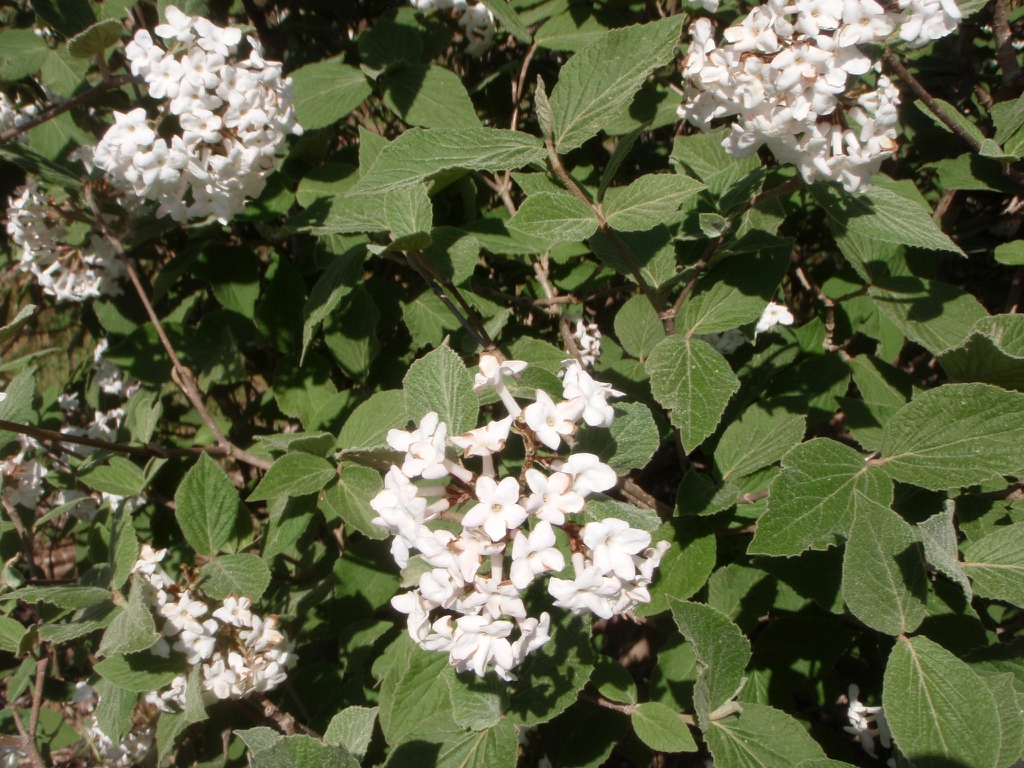Plant Viburnums for Year-Round Interest
go.ncsu.edu/readext?835154
en Español / em Português
El inglés es el idioma de control de esta página. En la medida en que haya algún conflicto entre la traducción al inglés y la traducción, el inglés prevalece.
Al hacer clic en el enlace de traducción se activa un servicio de traducción gratuito para convertir la página al español. Al igual que con cualquier traducción por Internet, la conversión no es sensible al contexto y puede que no traduzca el texto en su significado original. NC State Extension no garantiza la exactitud del texto traducido. Por favor, tenga en cuenta que algunas aplicaciones y/o servicios pueden no funcionar como se espera cuando se traducen.
Português
Inglês é o idioma de controle desta página. Na medida que haja algum conflito entre o texto original em Inglês e a tradução, o Inglês prevalece.
Ao clicar no link de tradução, um serviço gratuito de tradução será ativado para converter a página para o Português. Como em qualquer tradução pela internet, a conversão não é sensivel ao contexto e pode não ocorrer a tradução para o significado orginal. O serviço de Extensão da Carolina do Norte (NC State Extension) não garante a exatidão do texto traduzido. Por favor, observe que algumas funções ou serviços podem não funcionar como esperado após a tradução.
English
English is the controlling language of this page. To the extent there is any conflict between the English text and the translation, English controls.
Clicking on the translation link activates a free translation service to convert the page to Spanish. As with any Internet translation, the conversion is not context-sensitive and may not translate the text to its original meaning. NC State Extension does not guarantee the accuracy of the translated text. Please note that some applications and/or services may not function as expected when translated.
Collapse ▲ Viburnums are one of my favorite plants in the landscape as they are dependable and interesting in all seasons of the year. If you select the right species, you can have generous amounts of fragrant white flowers in the spring, glossy green leaves during the summer, attractive autumn foliage, and bright-colored fruits in late summer and fall. Viburnums are sturdy shrubs, easy to grow, are virtually pest free.
Viburnums are one of my favorite plants in the landscape as they are dependable and interesting in all seasons of the year. If you select the right species, you can have generous amounts of fragrant white flowers in the spring, glossy green leaves during the summer, attractive autumn foliage, and bright-colored fruits in late summer and fall. Viburnums are sturdy shrubs, easy to grow, are virtually pest free.
Viburnums can be used as specimen shrubs or small trees, in border plantings, and for screening as they range from small to very large. Choose a species that fits your space limitations. If properly located, the shrub should need only moderate pruning to retain a desirable form.
Viburnums can attract wildlife such as birds and small mammals because of the abundance of fruit produced on each bush. Plant Viburnum in a well-drained, fertile soil with a mulch of wood chips or other organic material extending several feet from the base to conserve soil moisture and suppress weed growth.
For flowers with great fragrance choose Koreanspice viburnum ( V. carlesii) or Judd viburnum (Viburnum x judddii). The Doublefile viburnum (V. plicatum f. tomentosum) is spectacular with large white flowers mid-May, that are produced in flat clusters, along horizontal branches somewhat like a dogwood. In the fall the foliage changes to a bright red and is accompanied by attractive red fruit which gradually turn black. I have added two evergreen viburnums to my landscape that I like. They are the Chindo viburnum (V. awabuki ‘Chindo’) that makes a good screening plant and Moonlit Lace viburnum (V. davidii ‘Moonlit Lace’.
There are many more varieties of viburnum. Make a visit to your local garden center or nursery to find viburnums, as they carry ones that do well in our area.




